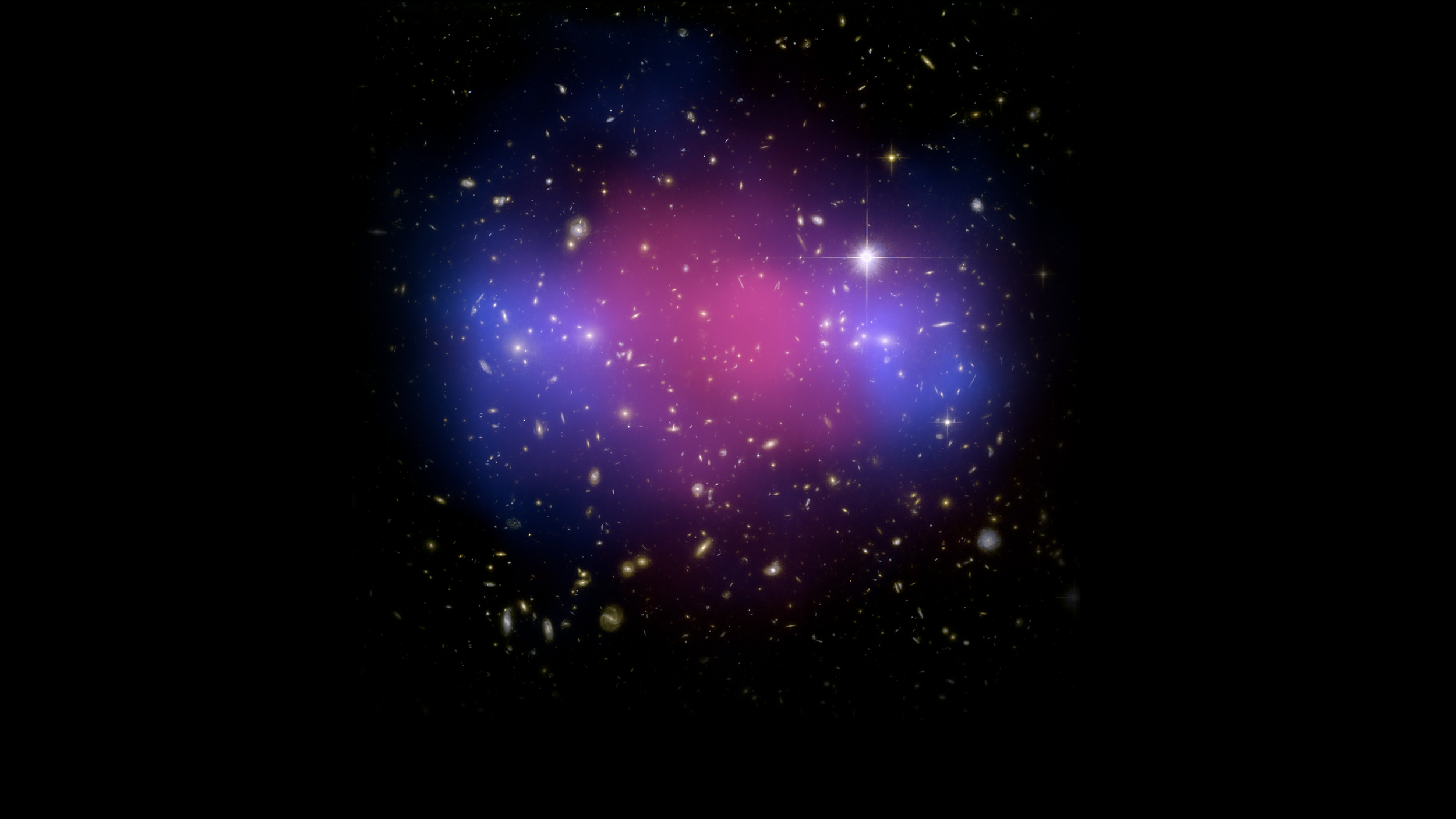
Frequently Asked Questions
What is happening, exactly?
In the FY25 President’s Budget Request, NASA proposes catastrophic cuts to Chandra’s operating budget. The first step, starting in October 2024, would be so drastic as to require laying off nearly half of the Observatory’s staff, greatly limiting or even precluding the ability to continue the mission. Even further cuts in FY26 and beyond destroy Chandra’s ability to continue its voyage of cosmic discovery, effectively ending its mission.
This is not NASA’s fault. Nobody at NASA wants this, and Chandra has been a crown jewel of the NASA Astrophysics portfolio for twenty five years.
Okay, so, why is this happening?
In the FY25 President’s Request, NASA’s overall budget has taken a 2% cut relative to its FY24 request, largely because of H.R. 3746 (the Debt Ceiling agreement of 2023), which places strong caps on non-defense discretionary spending. As such, nearly $1B has been cut from NASA’s Science Mission Directorate (SMD) in this year’s Request. NASA is obligated to plan to budget horizons provided by the Office of Management and Budget. This means that NASA Astrophysics leadership must make terrible, painful decisions in a zero-sum trade of cuts and investments.
What negative effects would Chandra’s premature end bring?
Chandra is the vanguard of the global field of X-ray astronomy, and a bridge to a brighter future for high energy astrophysics, which includes visionary mission concepts like Lynx, Athena, many fantastic Probe-scale proposals, concepts from our global partners, etc.
Chandra is healthy, efficient, and has possibly more than a decade of life left. Premature cancellation of the mission would likely trigger a death spiral in X-ray astronomy, both nationally and even perhaps globally. In the coming fiscal year alone (i.e. by October 2024), half of the Observatory’s staff will need to be laid off, a catastrophic and irreversible act.
18% of the Chandra Operations and Control Center in Burlington, MA is staffed by U.S. Military Veterans, currently holding excellent American STEM jobs. If the mission is canceled, those jobs will be lost.
The entire Chandra team consists of about 180 people in the Cambridge and Greater Boston area, as well as a decades-long partnership with the Marshall Space Flight Center in Huntsville, Alabama. The team, which consists of Astrophysicists, Engineers, Programmatic Experts, etc. across all career stages collectively shepherd a leadership-defining national competency in High Energy Astrophysics, a Nobel-prize winning field that the U.S. has been a leader in since its very first day. The astronomy job market absolutely cannot support more than a hundred scientists and engineers simultaneously in search of jobs, and so cancellation of the mission will result in evaporation of this expertise from the field. This loss of institutional memory is not reversible.
Chandra has supported a diverse STEM talent pool of more than 2,000 students and 5,000 unique Principal Investigators throughout the U.S. and worldwide. Demand for the telescope has been extremely high and consistent throughout the entire mission. Chandra data is a keystone of roughly 400 publications per year, every year, and that trend continues today. This makes it one of the most productive missions in the entire NASA Astrophysics Program, which is one of the reasons it was top-ranked in the 2022 Senior Review.
Watch Space Shuttle Commander Eileen Collins (Colonel, USAF, Ret.) introduce a tour of Chandra’s Operation Control Center (OCC) in Burlington, MA, You can virtually explore the control room here. 18% of the Chandra OCC staff are U.S. Army Veterans.
What is a “death spiral? That sounds dramatic.
Yup, it is. This could be an extinction-level event for X-ray astronomy in the United states, and even perhaps the world. How so?
If the Chandra team is largely laid off in the coming year, and when those talented team members leave, NASA loses memory and knowledge that might not be replaceable, particularly after a years-long gap. When investments in X-ray astronomy dry up, dying teams can’t make progress on future mission concepts, and so technological debt mounts as capability to repay it wanes. The price of a “re-start” once funding is finally available grows with time, and at some point becomes infeasible or reverts to a “start from scratch” state. We move backward on technologies we’ve been investing in for years. This is a waste of money and ensures years of lost progress, all but guaranteeing that we will surrender leadership in these critical technologies.
Because of this, enabling technologies for future mission concepts languish and “collect dust” at low technology readiness level (TRL) for many years. This dooms concepts that rely on those technologies, forcing them to present fundamentally low-TRL design reference missions to gate reviews, including TMCO panels for MIDEX AOs and, yes, Decadal surveys (e.g. Astro2030). This makes them costlier, riskier, and therefore less likely to receive high prioritization, which fuels the feedback loop.
These two forces conspire to create a receding and potentially unreachable horizon for future multi-scale facilities, which causes community atrophy at all levels. Why train students in a collapsing field? Why should industry co-invest in these technologies when APD shows no serious intent in funding or flying them? Why should e.g. decadal surveys recommend future X-ray missions when there is a diminishing underlying community constituency? This is the “final phase” of the feedback loop. It does not take many full cycles of that loop to almost destroy a field.
Isn’t Chandra aging? How much life could it have left?
Chandra is a triumph of American design & engineering. Even after twenty-five years of flight, and without a single servicing mission, Chandra remains healthy, is delivering some of its best-of-mission science, is enabling critical synergies with the James Webb Space Telescope alongside the world’s ground- and space-based observatories, and has enough fuel for nearly a decade of discovery ahead.
Unfortunately, in the Congressional Budget Justification, the FY25 NASA Request uses factually incorrect statements to motivate the request for Chandra’s rapid cancellation. The request, for example, states that “the Chandra spacecraft has been degrading over its mission lifetime to the extent that several systems require active management to keep temperatures within acceptable ranges for spacecraft operations. This makes scheduling and the post processing of data more complex, increasing mission management costs beyond what NASA can currently afford”.
This statement is largely untrue, as shown in the plot below. And in fact, Chandra’s mission operations costs have been largely flat with inflation for well more than a decade. Read the Chandra X-ray Center’s formal statement responding to each incorrect statement in the Request language for more details.
Look, there is no question that Chandra is aging — after 25 years in orbit, that’s natural and expected. Most of the spacecraft subsystems still have redundancy capacity, with the primary change over time being in the thermal insulation. This "aging" causes elements of the spacecraft and science payload to run at higher temperatures, with effects depending upon orientations relative to the Sun. The Chandra team has closely monitored these changes and their impacts on relevant subsystems over the course of the mission. Over time, the team has adjusted scheduling algorithms to mitigate the most serious impacts and to keep the mission running safely and at high efficiency.
And this team has been immensely innovative: For example, recently, a few members of the existing team of scientists and engineers spent a part of their time reprogramming the on-board Aspect Camera software to dynamically subtract background and increase sensitivity. This update effectively offset approximately the most recent 8 years (!) of warming trends for that system. Another few staff members recently modified procedures following infrequent safing events which orient the solar arrays at 90 degrees to the Sun to ensure maximum power, since that also warms a few of the Observatory systems to higher levels than desired (but still within acceptable limits). The spacecraft and instruments can now be oriented to higher pitch angles relative to the Sun, limiting their temperature increases while the solar arrays stay at 90 degrees to the Sun when a safing event occurs.
These recent responses from the Chandra team are part of their regular responsibilities and are carried out within the available staffing and funding levels. Mission costs are not being driven higher by these activities — many other updates and simplifications and risk-reducing procedures have been carried out throughout the history of the mission, by the same team which operates and monitors the observatory.

